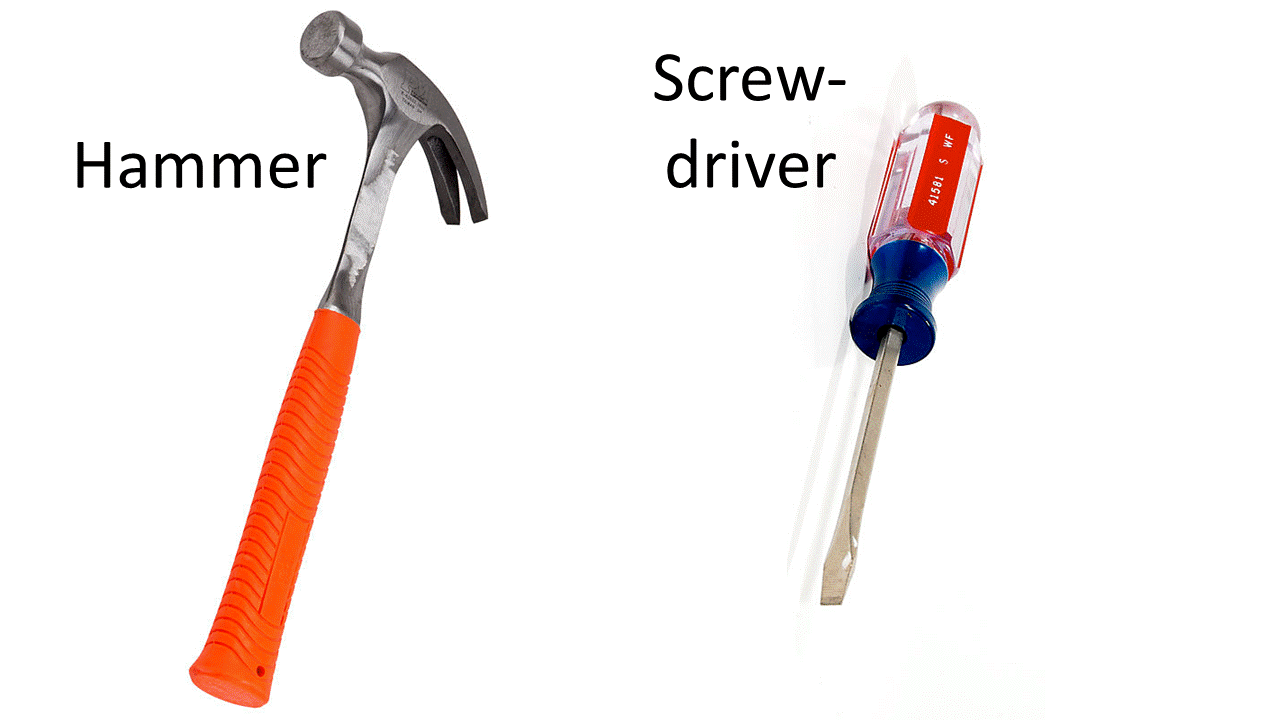With our design specification nailed down, we now begin the process of idea generation. Let’s start with a quick exercise:
Get out a sheet of paper and write down the first thing that comes to your mind when I tell you to think of:
- a color,
- a hand tool,
- a flower,
- a piece of furniture.
Let’s see how you did:
😉
Was your color blue or red?
Was your tool a hammer or screwdriver?
Was your flower a rose or tulip?
Was your piece of furniture a chair or couch?
Why is it that given a huge array of possible answer to these questions, I’m able to reliably predict the majority of the class responses (~66-80% of the time) with just two possible answers?
Our educational system primarily teaches conformity and reliability, i.e. algorithmic rule following towards a predictable outcome. Sir Ken Robinson’s TED talk, the most watched TED talk, hits this point home… along with Seth Godin’s TED talk and many others from leading educators and thought experts. Our western culture prides uniqueness, creativity, and original individual thought. The reality though is that our social behaviors and tools for aggregating knowledge (via Conway’s Law) have a HUGE effect on the products we produce.
To really start the process of idea generation so that we don’t simply mimic or conform to what is already out there, we really need to be aware of our mental ruts and employ system-level thought practices to break us into new thought paradigms or memes:
We first need to establish a spectrum or continuum of possibilities to place our specific design into context relative to other possible designs. The author of your textbook breaks down systems by Scale, Function, Structure, and Temporality. I’ve modified these to breakdown systems in four different (but interconnected) ways:
- Spatial
- Temporal
- Energy
- Information
Today we address the first two. Ray and Charles Eames are widely considered the greatest husband and wife design team in American History. While being primarily known for the design of furniture (including the examples above) they regularly undertook very diverse design challenges in their studios (now the homes of Facebook in California and Google in Chicago). In the early 1970’s IBM approached the duo with the need to help instill the importance of science and math in the minds of American youth (sound familiar?). The resulting film, Powers of Ten, made history. A writeup on the making of the film is here.
Since hydrogen is 74% of the known atomic mass in the universe it is the dominant atom at almost every scale in Powers of Ten. Although we could daydream a version of our system at every scale in Powers of Ten, only a few of the spatial and temporal scales are relevant to the design challenge at hand. Your task to post as a sub-assembly team to Slack for Wednesday is:
- Identify the appropriate space and time scale that your sub-system must operate in.
- How do these space and time scales control the design characteristics? i.e. Why must your design operate at a specific scale and what are the key limiters?
- Does your subsystem house of quality account for these limitations?
- Now a fun lesson in innovation, either increase or decrease the scale (think both spatially and temporally) to the point where your prior system no longer works. How would your system look or function at this new scale? Can this change lead to any insights on your current scale?





